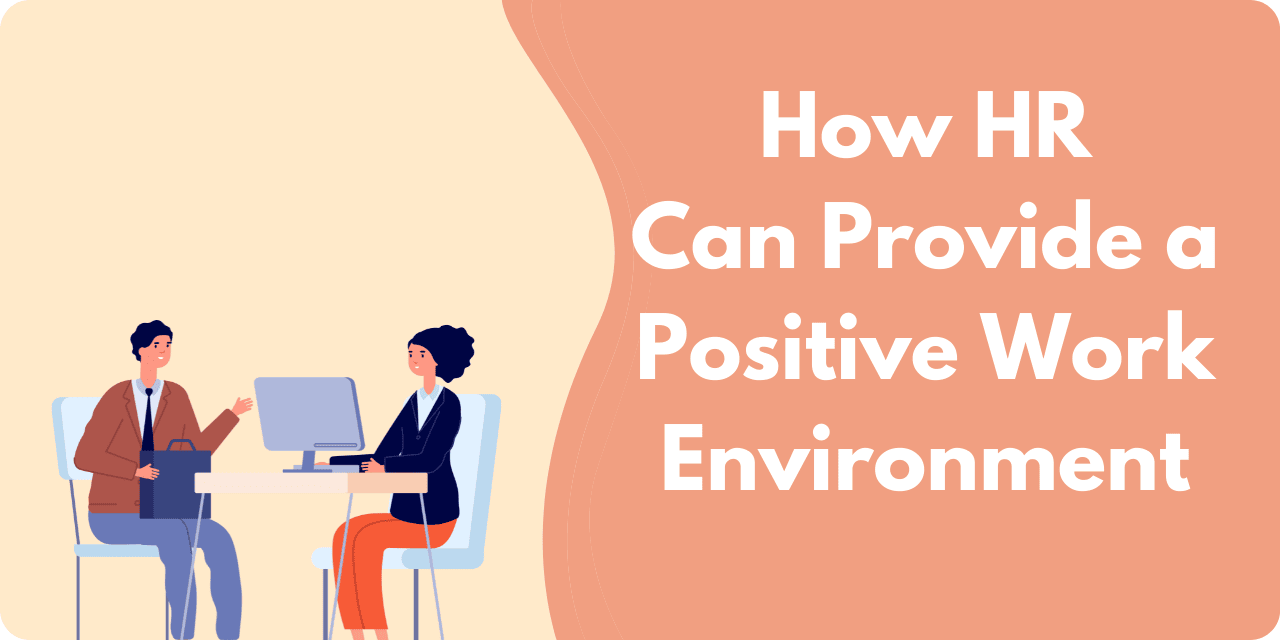In a business setting, every employee is responsible for creating a positive work environment, but HR employees have a more direct role in establishing a culture where people feel welcome, valued, safe, and celebrated. While you can use HR software to automate many human resources-related tasks, a positive work environment is something only humans can develop and HR employees are in the perfect role to make that happen. Here’s how.

Hiring the Right People
As one of the core responsibilities of human resources, hiring is the number one way in which HR employees impact a workplace environment. Of course, many people may be involved in the hiring process, but in many cases, HR workers are in charge of bringing in candidates and vetting them before they are officially offered a position. This is where HR managers come in. They assess whether a candidate is the right fit for the office culture.
Using various surveys, personality tests, and interview questions, HR managers are able to determine whether or not a person will contribute positively to the workplace environment. Of course, these tools sometimes miss things and employees don’t work out, but the more you practice the skill of matching a candidate to a job, the better you’ll get at it.
Communication
Lack of communication is a top frustration of employees at companies that don’t have a positive work environment. Employees want transparency and expect to be the first to learn about changes that will impact them directly. Much of this communication falls to human resources departments because they usually have access to everyone in the company. They are able to facilitate communication from leadership to employees in all departments to make sure everyone is on the same page at all times.
Today, most human resources departments use technology to communicate (an internal messaging system or email), but there are other ways to make sure your employees always feel like they’re in the loop. Newsletters, for example, are an excellent way to communicate non-urgent news, events, and celebrations.
Of course, major announcements and changes should be communicated in-person or by video chat as soon as possible, especially if employees are expected to alter the way they work or are otherwise directly impacted. It’s also good to establish communication guidelines for the entire company to make sure news isn’t lost or forgotten. For instance, ensuring all announcements are archived in an accessible place for all employees can help people catch up with news they’ve missed.
Engagement
Employees who only come to the office or log on to the computer to do their job aren’t usually very happy employees. Yes, they are primarily there to work, but we spend so much time at the office that it needs to be satisfying and even fun at times. HR employees are often in charge of engaging employees so that they feel comfortable at work. Even though it’s called “work,” it doesn’t have to be dreary, boring, or hard.
HR employees are tasked with planning activities that will strengthen the bonds between co-workers, their bosses, and company leadership. Hosting team building games in person fosters positivity in the workplace by giving employees a shared experience. Research shows that when people go through an experience together, whether positive or negative, their connections to each other deepen. HR’s role is to make sure those connections are positive.
Engagement can also come from community celebrations like birthdays and holidays, and from recognition through awards and appreciation. These moments don’t have to be huge, elaborate productions, but they do need to be authentic. HR employees ensure that employees are celebrated and appreciated for their work so they feel like they are valuable contributors to the company.
Providing Information
There is a reason why “resource” is part of the human resources title and it’s because employees look to their HR department for information and answers. If employees don’t feel like there’s anywhere they can go if they encounter a sticky situation at work, they may feel threatened or unsafe. Whether they need help with their direct deposit or they’re being harassed by another employee, workers turn to HR for assistance.
HR departments have a huge responsibility when it comes to an employee’s sense of well-being in the office and their response to employees’ questions has a major impact on company culture. If their concerns are taken seriously and HR provides a satisfactory response, the culture will reflect that positivity. And, of course, the opposite is true as well. A lack of response or an unsatisfactory resolution can turn a workplace negative in no time at all.
Conclusion
As an HR professional, your impact on the company culture is massive so be thoughtful and intentional with every activity you plan, policy you implement, and question you answer. Building a positive work environment takes time, but it is worth it for the impact it has on employee morale and productivity.
